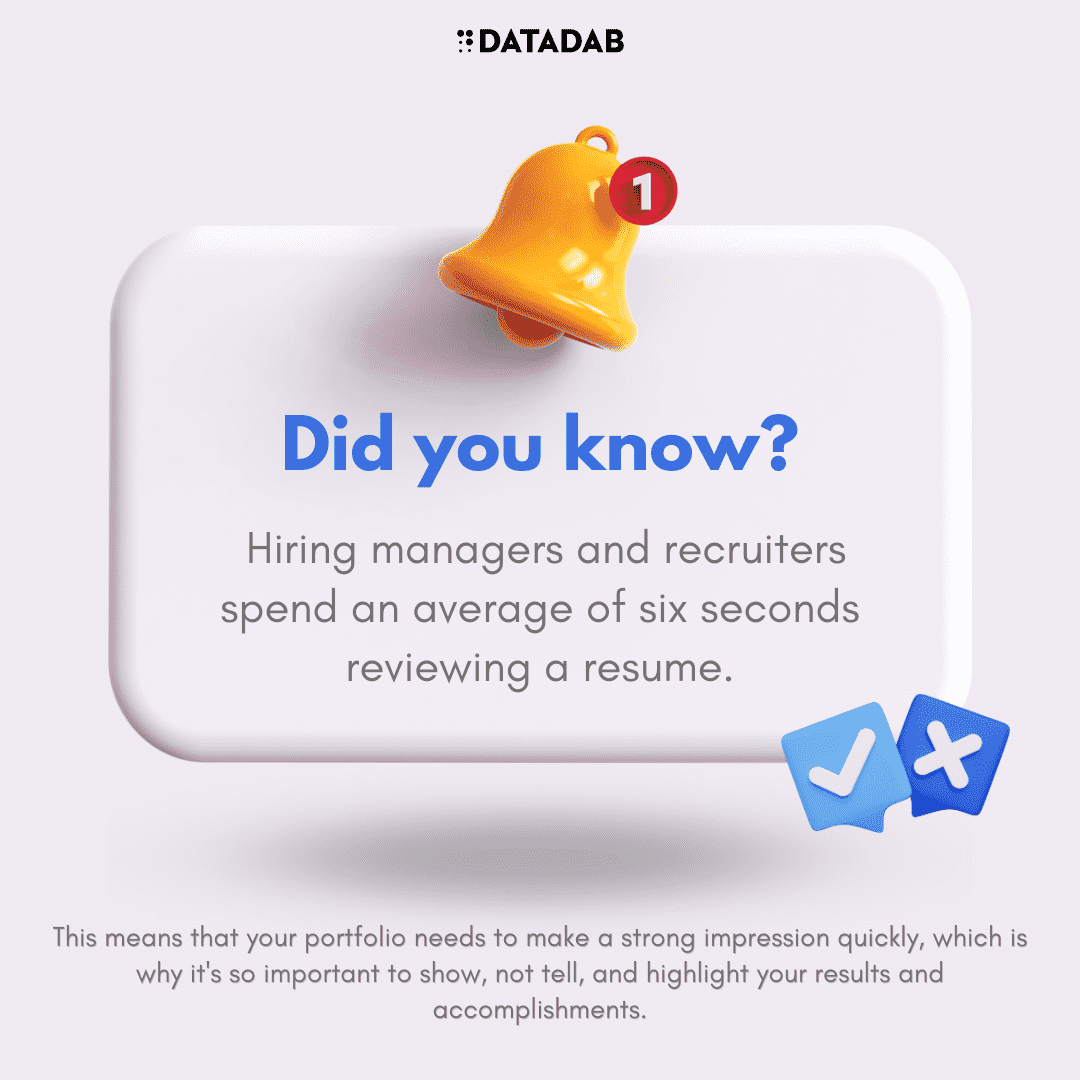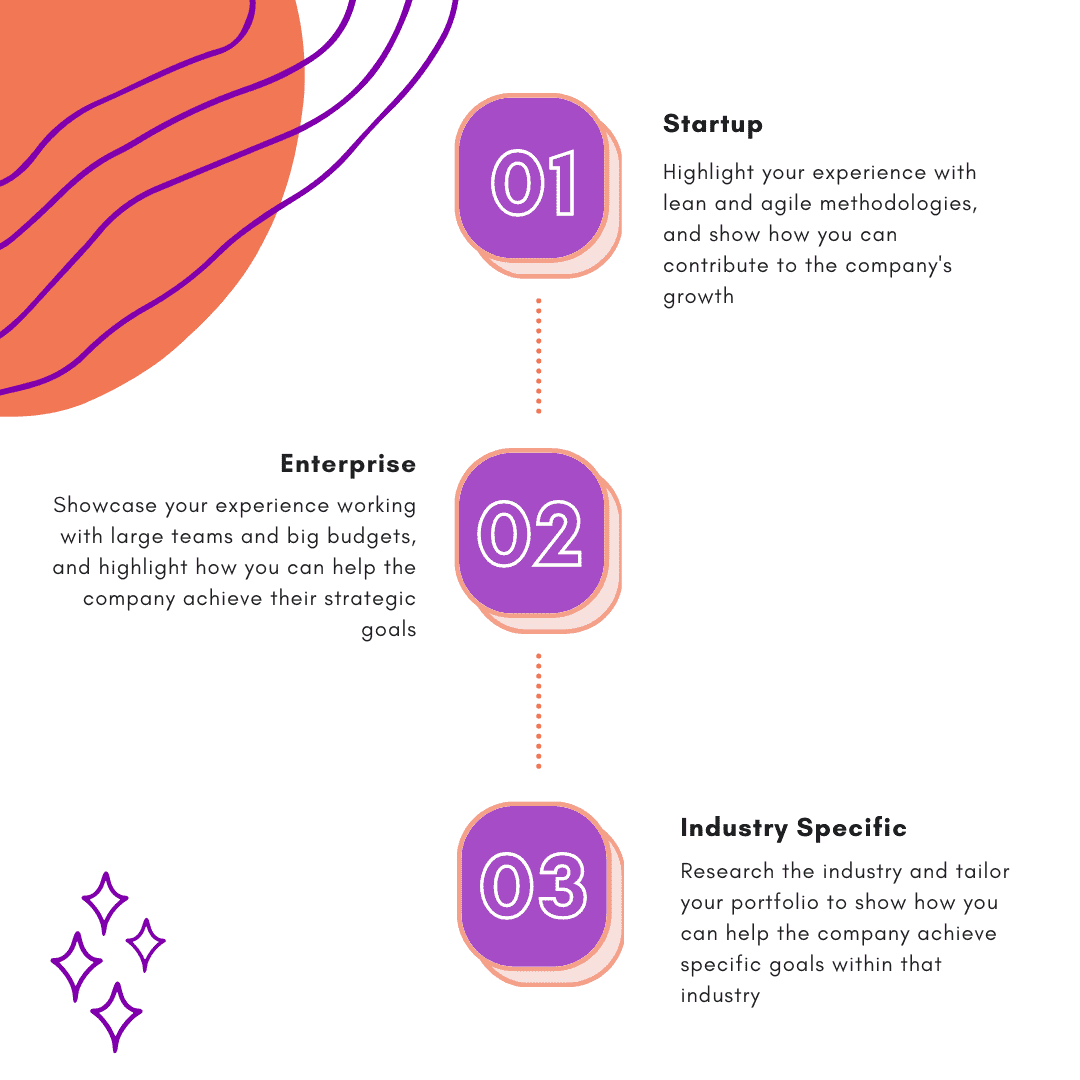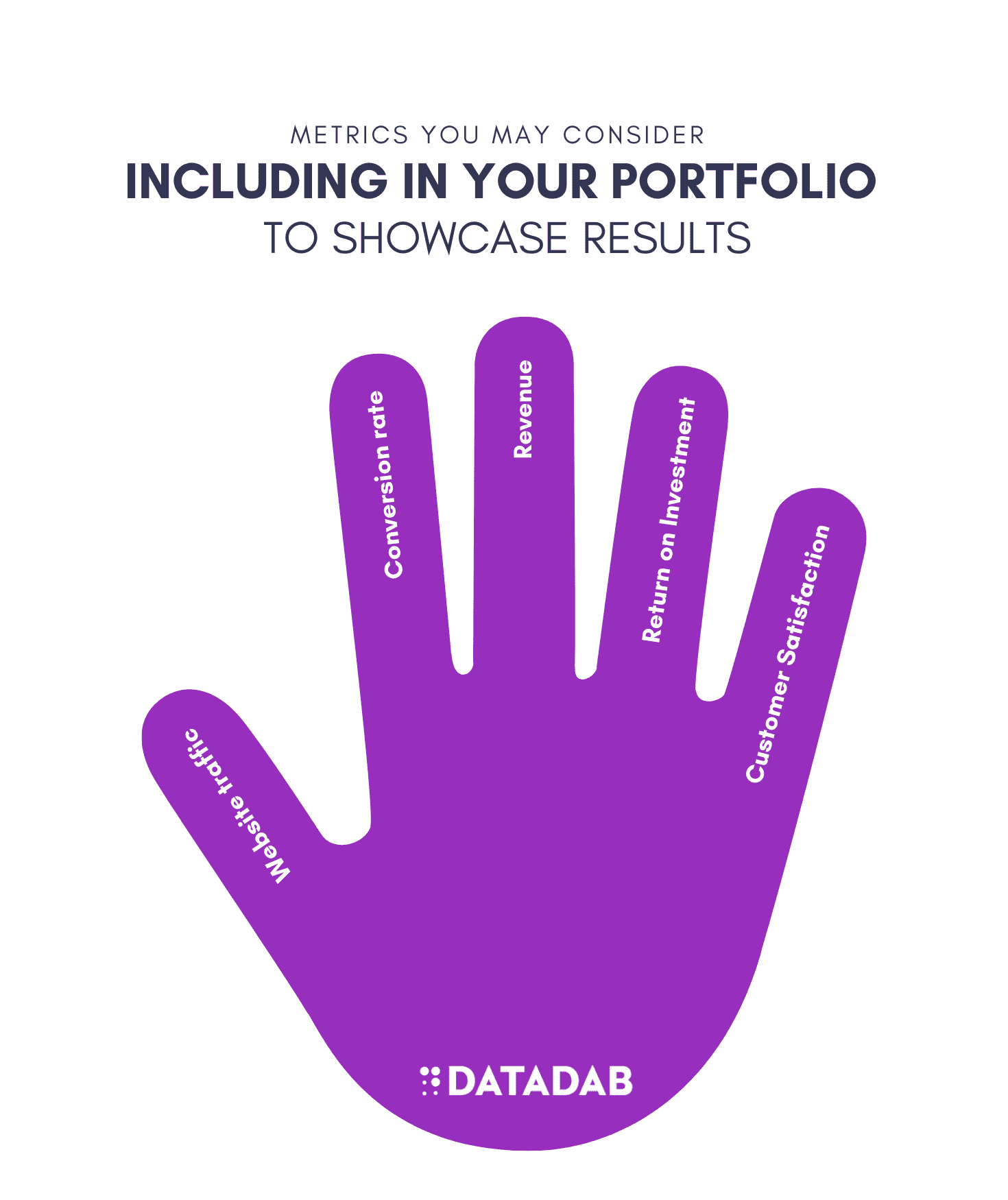"A good portfolio is a visual representation of your thought process, your skills, and your ability to tell a story."
As the owner of a successful SaaS marketing agency, I know firsthand the importance of building an impressive portfolio that truly captures my unique value. Early on in my entrepreneurial journey, I made the mistake of overlooking my personal portfolio while pouring all my energy into client work and growing my business.
However, during the hiring process for the VP of Marketing role I really wanted, my mediocre portfolio held me back, and I lost out to less qualified candidates who simply had better showcases of their talents. It was a tough lesson that made me realize just how much portfolios matter – perhaps even more than your resume or work experience.
After rebuilding and optimizing my portfolio from the ground up, highlight specific high-impact SaaS marketing campaigns I spearheaded, the quality of opportunities that came my way took a quantum leap. Suddenly, I was fielding calls from VC-backed startups, multi-national corporations, and everywhere in between.
This taught me that an exceptional product marketing portfolio is absolutely essential for advancement as a marketing leader. In a crowded marketplace, you need to clearly communicate your unique value prop and back it up with tangible evidence of results. Your portfolio is the perfect vehicle to accomplish this effectively. In this comprehensive guide, I'll share the exact framework I used to transform my portfolio into one that consistently opens doors.

Why Your Portfolio Matters
Your portfolio showcases your capabilities better than any resume can. It's a living, breathing representation of the impact you can make.
While resumes focus on what you did, portfolios demonstrate how well you did it. They reveal your strategic thinking, technical expertise, and execution skills.
An exceptional portfolio positions you as an attractive candidate worth hiring. On the other hand, a weak portfolio can hold you back from landing your dream job.
That's why investing time in developing a robust portfolio is one of the highest leverage activities for your career.

How to Structure Your Portfolio
There are many ways to organize your portfolio. Here is a framework that works well:
Overview: Brief background on your experience and skills. Explain your approach to product marketing.
Case Studies: In-depth examples of your best work. Include 3-5 projects showcasing different skills.
Campaigns: Specific marketing campaigns you designed and executed. Show 2-3 campaigns tied to case studies.
Design Samples: Visual designs like presentations, one-pagers, emails, etc. Include 3-5 samples representing your brand.
Testimonials: Quotes from colleagues, clients, or managers praising your work. Aim for 2-3 strong endorsements.
This structure demonstrates the full range of your capabilities in a compelling way. Now let's dive into each section.
Crafting Strong Case Studies
Case studies are the centerpiece of your portfolio. They tell a story of how you identified challenges, devised solutions, and delivered results.
Each case study should cover:
The Challenge: What problem were you trying to solve?
Your Role: Were you the lone product marketer? Part of a team?
The Solution: What strategies, campaigns, or designs did you create?
The Results: What impact did your work achieve? Include metrics.
Key Takeaways: What did you learn from this project?
The best case studies highlight your unique strengths. For example, if you're a positioning expert, detail how you reframed the product and messaging. If you're a growth wizard, spotlight campaigns that went viral.
Here are examples of compelling case studies:
Case Study: Relaunching a Flagship Product
The Challenge: ABC Company's flagship product had stagnant growth and needed reinvigorating.
Your Role: Led a cross-functional team on repositioning and relaunch.
The Solution: Reframed messaging to focus on new benefits. Launched with updated branding, website redesign, and growth campaign.
The Results: Doubled conversion rates from new messaging. Revenue growth accelerated from 5% to 15% quarter-over-quarter.
Key Takeaways: Small changes in positioning can have outsized business impact.
Case Study: Growing Adoption of a New Feature
The Challenge: XYZ startup launched an AI-powered feature but only 15% of users adopted it.
Your Role: Devised a campaign to increase activation.
The Solution: Targeted power users via in-product prompts. Created educational content for broader audiences.
The Results: Adoption rates rose to 45% within 3 months. Company hit 1 million in ARR ahead of projections.
Key Takeaways: Mix smart targeting with educational content to drive feature adoption.
Spotlighting Marketing Campaigns
For 1-2 of your case studies, dive deeper into specific marketing campaigns you designed.
Showcase campaigns that were:
Strategic: Campaigns that involved planning, positioning, and analysis.
Creative: Interesting, innovative, or bold campaign creative.
Effective: Campaigns that delivered impressive results.
For each campaign cover:
Goals: What were the business and marketing goals?
Strategy: How did you target customers and tailor messaging?
Tactics: What channels, creatives, and other tactics did you use?
Results: How many people did you reach? What conversions and metrics did you drive?
Analysis: What key learnings emerged about your market?
This level of detail demonstrates your hands-on marketing abilities.

Showcasing Visual Design Skills
Visual artifacts like presentations, one-pagers, emails, and ads display your design skills.
Include 3-5 samples that represent your brand. Comment on your design choices and why they were effective.
For example:
"This product launch one-pager uses bright colors and illustrations to convey our friendly, straightforward brand. The simple layout draws attention to the key benefits."
Well-crafted designs signal that you can produce professional collateral.
Using Testimonials to Build Credibility
Testimonials lend outside credibility to your capabilities.
Aim for 2-3 written endorsements from people you've worked with like:
- Colleagues
- Managers
- Clients
- Partners
For each testimonial, include:
- The person's name, title, and company
- How they know you and your work
- What abilities they endorse
For example:
"John Doe was our product marketing lead during a critical rebranding effort. He demonstrated exceptional strategic thinking and creativity. John conceived and executed marketing campaigns that far exceeded our expectations. He has my highest recommendation."
-- Sarah Lee, CMO, ABC Company
Testimonials carry more weight when they come from recognizable companies and influential roles.
Tips for Portfolio Creation
Here are a few final tips for creating a high-impact portfolio:
Show diversity: Feature B2B and B2C products, small startups and large enterprises, etc.
Keep it visual: Images, graphs, charts, and videos make your work more engaging.
Write tightly: Convey insights clearly and concisely. Cut the fluff.
Link to live samples: If possible, embed or link to live sites, campaigns, and designs.
Optimize navigation: Make your portfolio skimmable and scannable.
Monitor results: Track your portfolio's click-through rates to improve its performance.
Get Your Portfolio Noticed
A well-crafted product marketing portfolio is your secret weapon for launching your career. It captures hiring managers' attention and positions you as a skilled practitioner.
While resumes are easily forgotten, an exceptional portfolio leaves a lasting impression. It's proof that you can execute at a high level and deliver impressive business impact.
So take the time to develop a robust body of work. Continuously refine your portfolio with new projects and achievements. You'll be amazed at how much interest it generates.
A stellar portfolio paired with product marketing skills can open up a world of exciting opportunities. Now go wow them!
FAQ
What should I include in my product marketing portfolio?
For a SaaS product marketer, your portfolio should highlight your experience driving product strategy, positioning, messaging, and launches. Include examples like product roadmap documents, positioning statements, messaging frameworks, launch plans, and results data showing traction and growth from your launches. Use metrics like website traffic, conversions, leads generated, and customer testimonials.
How do I showcase my experience with different customer segments?
Use case studies and examples tailored to different customer segments like small businesses, enterprises, tech companies, healthcare, etc. Show how you developed positioning and messaging that resonated with each segment and drove successful adoption. Include customer quotes and testimonials for added impact.
How do I demonstrate thought leadership?
Include writing samples like blog posts, ebooks, and articles that provide valuable insights for your target audiences. Also list speaking engagements, webinars delivered, and conferences where you presented. These showcase your expertise.
What types of visuals and designs should I use?
Leverage charts, graphs, diagrams, and images to make your portfolio visually compelling. Use infographics to display data. Ensure it is well-designed and aligned to your personal brand.
What tools and platforms should I use to build my portfolio?
Some good options are WordPress sites, Squarespace, Wix, Behance, LinkedIn ProFinder, or a PDF document. Choose a platform that allows you to creatively showcase your expertise.
How should I structure and organize my portfolio?
Organize by skills, experience, and results. Have a compelling about section, experience highlights, case studies, client testimonials, and work samples. Ensure it flows logically and is easy to navigate. Use headings, sections, and visual dividers.
How often should I update my portfolio?
Aim to update your portfolio every 3-6 months. Add new work samples, achievements, testimonials, and skills. Refresh visuals and content. This shows you are actively developing as a product marketer.
What makes a portfolio stand out?
Creative visuals, a cohesive brand/theme, quantified results, powerful client testimonials, and concise, engaging writing help make a portfolio memorable. Show why you are the right marketer for the job.
Should I tailor my portfolio for each application?
Yes, customize and tailor your portfolio to highlight the qualifications that are most relevant for each application. Adapt your case studies, work samples, and client logos accordingly.
How can I get feedback to improve my portfolio?
Ask colleagues, mentors, and even people in your target roles to review your portfolio and provide feedback. Their insights can help refine your portfolio and make it more compelling. Be open to criticism.






